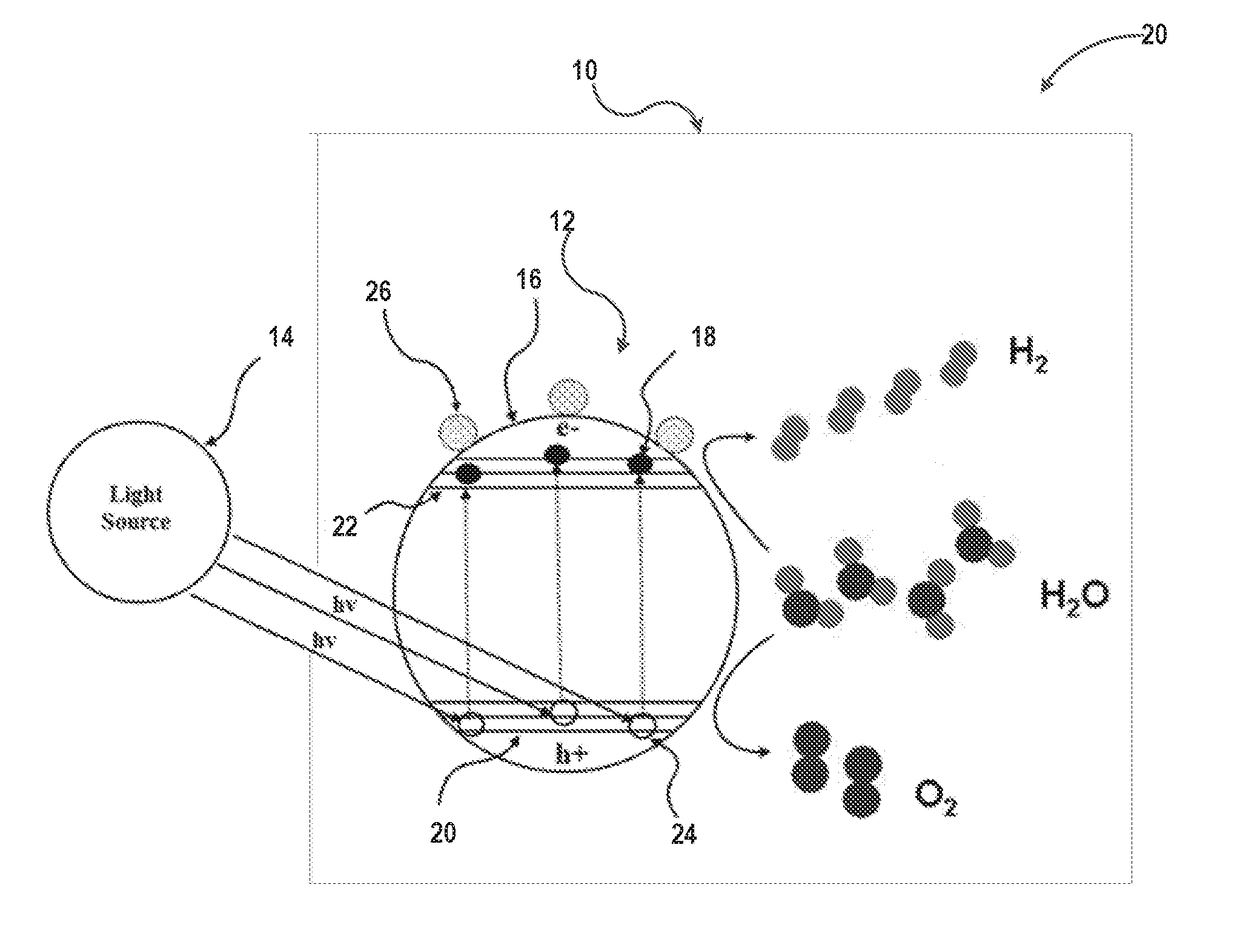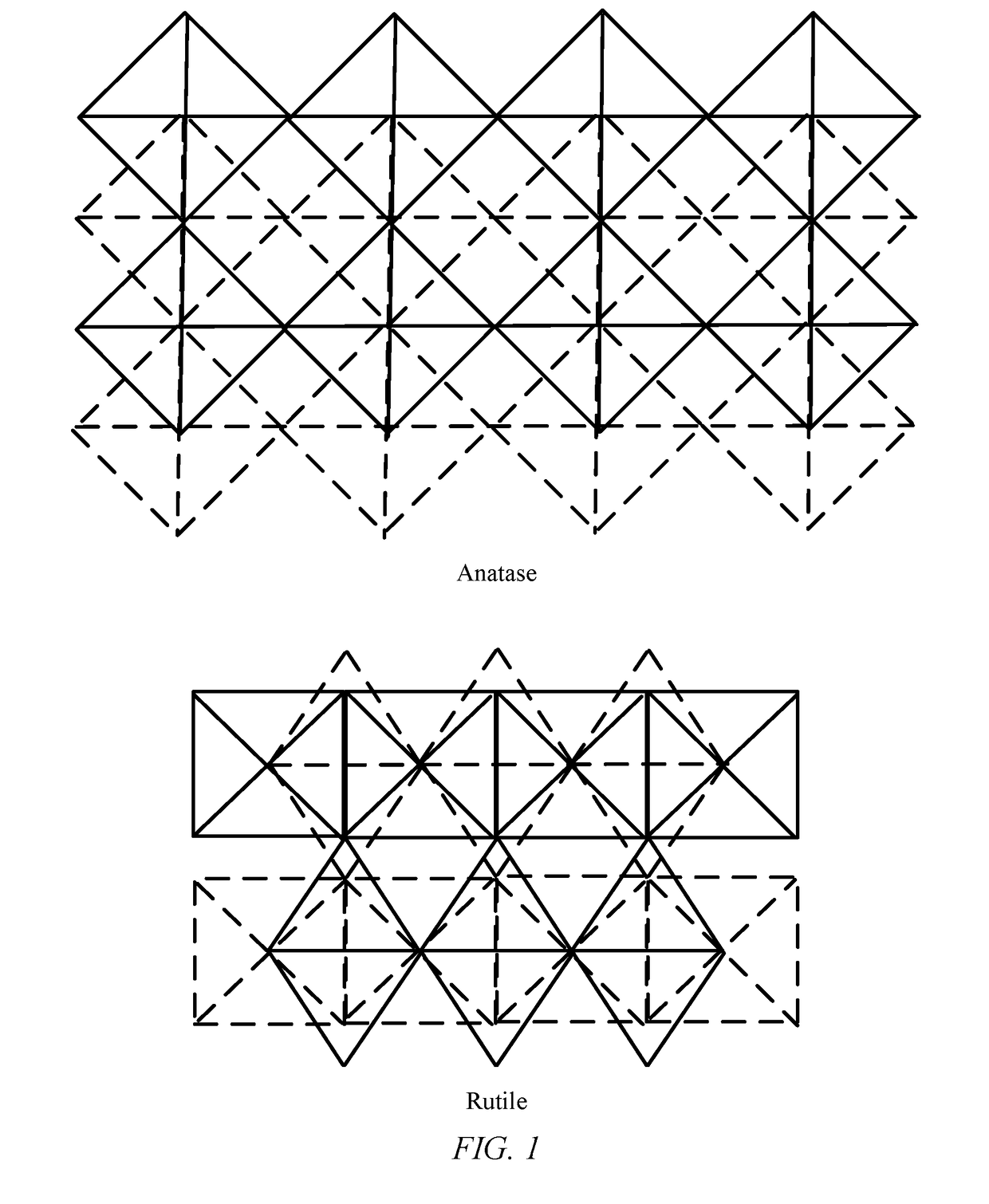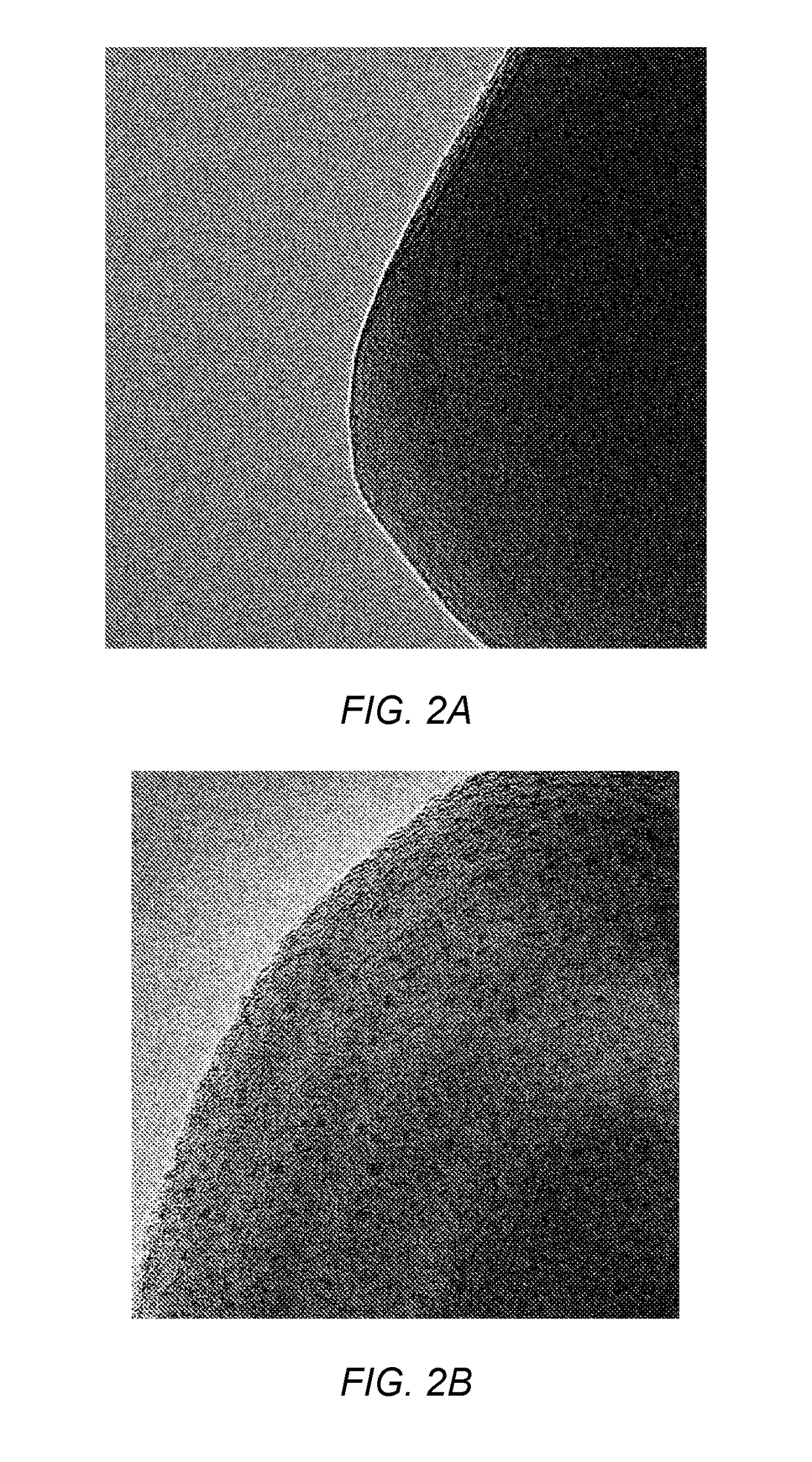Photocatalytic hydrogen production from water over mixed phase titanium dioxide nanoparticles
a titanium dioxide nanoparticle and photocatalytic technology, applied in metal/metal-oxide/metal-hydroxide catalysts, catalyst activation/preparation, inorganic chemistry, etc., can solve the problem of reducing the efficiency of photocatalysts. , to achieve the effect of reducing the probability, increasing the hydrogen production, and reducing the likelihood
- Summary
- Abstract
- Description
- Claims
- Application Information
AI Technical Summary
Benefits of technology
Problems solved by technology
Method used
Image
Examples
example 1
Photocatalyst Preparation
[0056]Synthesis of mixed phase TiO2 nanoparticle samples A-E. Single phase titanium dioxide anatase nanopowder was commercially purchased (Sigma Aldrich®). The nanopowder had a surface area of about 55 m2 / gcatalyst and a particle size of about 20 nm. The nanopowder was annealed isochronally for 1 hour at different temperatures in the range of 700° C. to 800° C. to obtain mixed phase TiO2 nanoparticle samples A-E. The temperatures and amounts of rutile phase in the samples are listed in Table 1. Table 1 also lists the surface area and particle size of the anatase phase and the rutile phase in the samples. The amount of rutile phase was determined using XRD as described above. The particle size was determined using the Scherrer equation based on the main diffraction line.
[0057]Synthesis of mixed phase TiO2 microparticle comparison samples F-L. Single phase titanium dioxide anatase micropowder was commercially purchased (Fisher Scientific). The micropowder had ...
example 2
Use of Photocatalysts in Water-Splitting Reactions
[0068]Experimental Set-Up: Catalytic reactions were conducted in a borosilicate (Pyrex®, Corning) glass reactor having a capacity of 100 mL. For each experiment, a photocatalyst was added to the glass reactor in a concentration of 0.1 g / L (25 mg in 21 mL total volume). The photocatalyst was reduced under hydrogen flow at 350° C. for 1 h followed by purging with nitrogen gas for 30 minutes. Deionized water (20 mL) and sacrificial agent (ethanol, 5 v / v % based on total water, 1 mL) were added to the reactor. The reaction mixture was irradiated with sunlight, with a light flux at the front side of the reactor of between 0.3 and 1 mW / cm2. The mixture containing photocatalyst, water and sacrificial agent was stirred constantly under dark conditions to disperse the catalyst and sacrificial agent in the water. The reactor was then exposed to a UV light source (100 Watt UV lamp (H-144GC-100, Sylvania par 38) with a flux of about 2 mW / cm2 at ...
PUM
| Property | Measurement | Unit |
|---|---|---|
| mean particle size | aaaaa | aaaaa |
| mean particle size | aaaaa | aaaaa |
| particle size | aaaaa | aaaaa |
Abstract
Description
Claims
Application Information
 Login to View More
Login to View More - R&D
- Intellectual Property
- Life Sciences
- Materials
- Tech Scout
- Unparalleled Data Quality
- Higher Quality Content
- 60% Fewer Hallucinations
Browse by: Latest US Patents, China's latest patents, Technical Efficacy Thesaurus, Application Domain, Technology Topic, Popular Technical Reports.
© 2025 PatSnap. All rights reserved.Legal|Privacy policy|Modern Slavery Act Transparency Statement|Sitemap|About US| Contact US: help@patsnap.com



